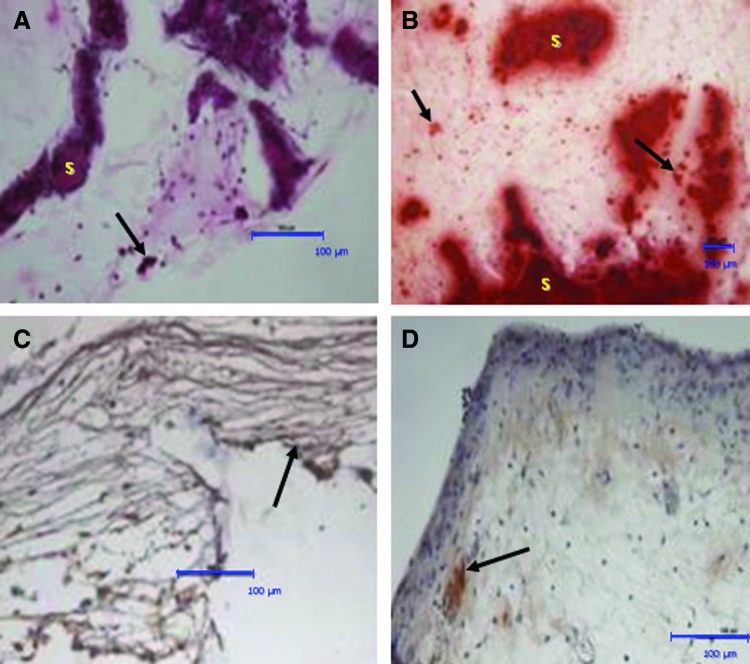FIG. 5.
H&E and Alizarin red staining of HDPSC–3D Bioglass scaffold constructs following intraperitoneal implantation in vivo in diffusion chambers. After 8 weeks in vivo implantation, H&E staining (A) indicated extracellular matrix condensation/woven bone-like spicule formation (arrows). Alizarin red staining (B) for calcium deposits in HDPSC–scaffold constructs showed that despite the fact that the calcium-rich scaffolds themselves (“S”) were intensely stained with the Alizarin red, additional staining was also seen in the “tissue” surrounding the scaffold (arrows). (C) Immunohistochemical staining for collagen type I shows parallel collagen-I-positive fiber/bundle formation (arrows). (D) Immunohistochemical staining for osteocalcin was positive in all samples (sections counterstained with Harris hematoxylin). Scale bars=100 μm. Color images available online at www.liebertpub.com/tea

